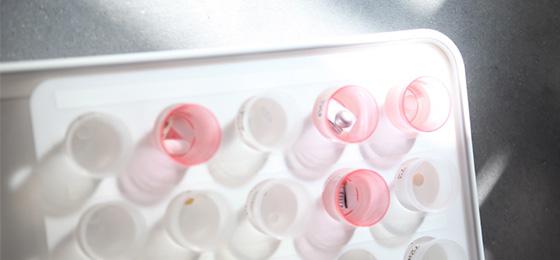14 Antibiotic durations can be reduced without risk
Even when antibiotic durations are halved, the same good results can be achieved as with the twice-longer, “classic” duration in the treatment of Gram-negative bloodstream infections. This reduction can reduce both side effects and the development of antibiotic resistance.
Project description (completed research project)
A total of 504 patients hospitalized at any of three centres with a Gram-negative bloodstream infection took part in the study. They were randomly assigned to three groups: the first received 14 days of antibiotics, the second seven days, and the third an individualized duration; the choice of antibiotic was determined by the clinician. Neither the patients nor the doctors knew which group the patients were assigned to until the medication was discontinued. After 30, 60 and 90 days, the effectiveness of the respective treatment duration was evaluated, taking into account any complications and based on the data from the electronic-health record.
Background
In order to avoid unnecessary or harmful antibiotic therapy, it must be selected and implemented according to evidence-based criteria. However, the evidence base is often insufficient. This can be remedied, however, by controlled randomised trials that are carried out in a normal clinical setting using data from the electronic health record. These trials are more efficient than conventional studies and contribute to the introduction of self-learning systems in the health care system.
Aim
The aim of the study was to determine the optimal duration of antibiotic therapy for bloodstream infections in order decrease the emergence of bacterial resistance to antibiotics. For the first time in Switzerland, a point-of-care randomized trial using electronic health data was to be carried out.
Results
30, 60 and 90 days after randomisation, patients receiving seven days of antibiotics and those receiving an individualised duration, which also averaged seven days, did just as well as patients receiving 14 days of antibiotics. No significant differences were observed among the three groups with regard to the recurrence of the infection: the rate was 6.6% for the seven-day treatment, 2.4% for the individualised duration and 5.5% for the fortnightly treatment.
Relevance / Application
Significance of the results for research
This point-of-care randomization study design, used for the first time in Switzerland, has created a platform for further studies that allocates patients to intervention and control groups randomly, cost-effectively and using the electronic health record in the normal clinical setting, thus contributing to better use of health resources.
Significance of the results for practice
The study shows that antibiotic durations for Gram-negative bloodstream infections in this patient population with can be reduced without risk.
Original title
The PIRATE project: a Point-of-care, Informatics-based Randomised, controlled trial for decreasing over-utilisation of Antibiotic Therapy in Elderly and comorbid populations

